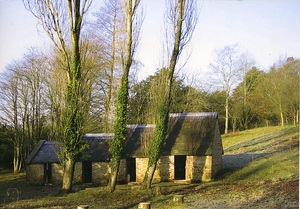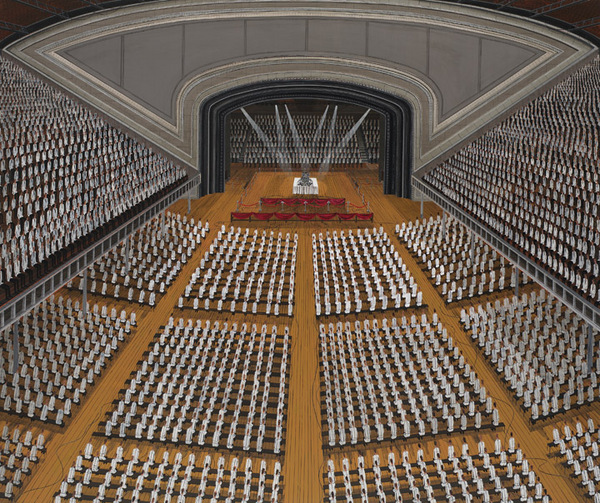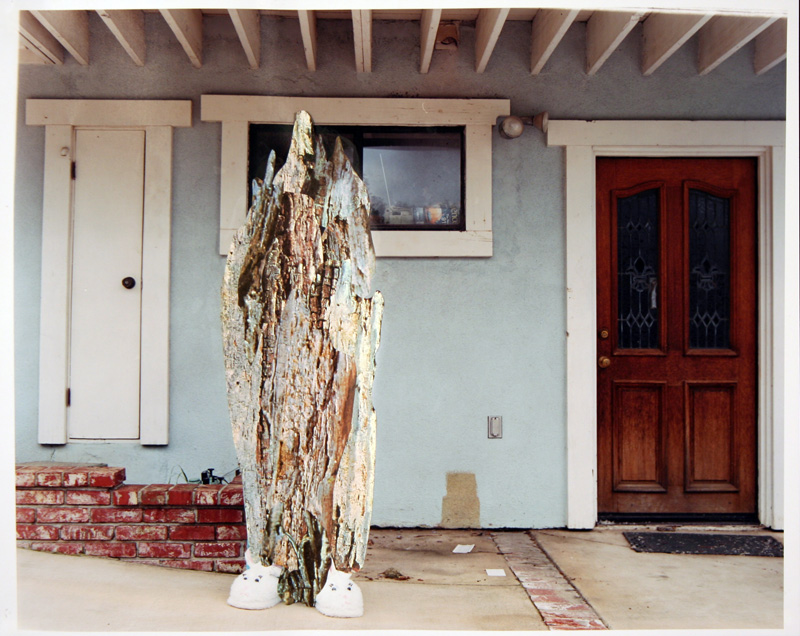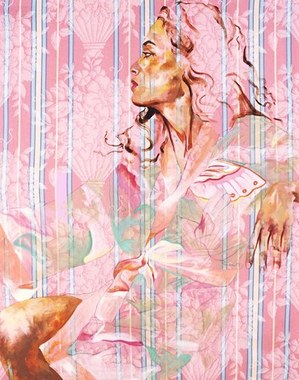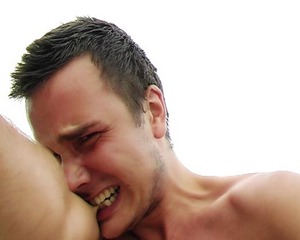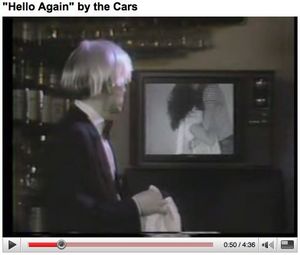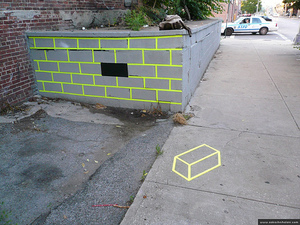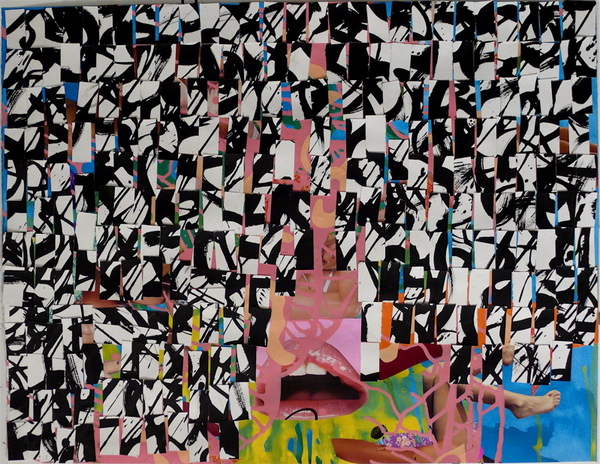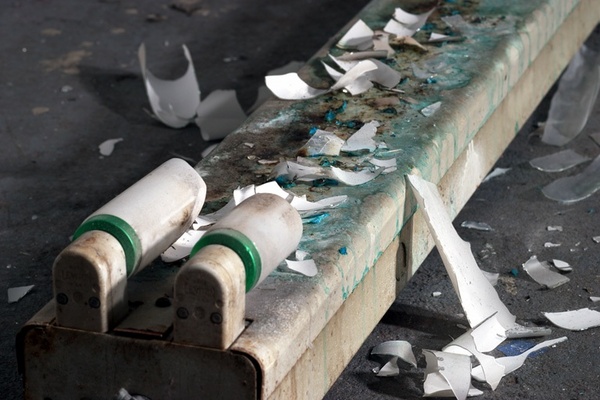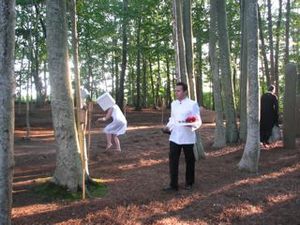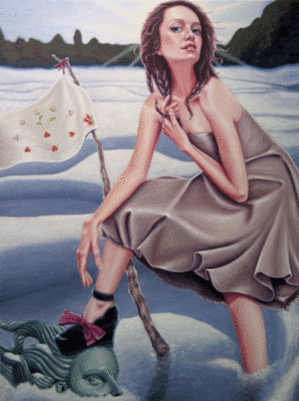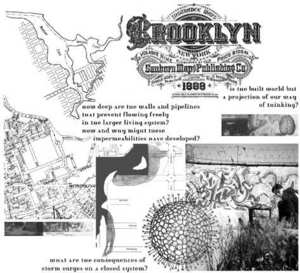This is an archive of the ArtCat Zine, 2007-2009. Please visit our new project, IDIOM.
August 2008
Recommended in the most recent issue of Log, Any Corporation's journal of architecture and the contemporary city, is Kurt W. Forster's short text on SANAA's 2003 reimagining of the New Museum. Granted the suggestion of these observations may seem to come a bit late to readers who have witnessed the issue beaten to death earlier this year in the popular (if tedious) city media on occasion of the Museum's completion and opening, your correspondent here nonetheless begs you to overlook this timeliness or untimeliness with the following promise: Forster's piece offers what may have taken a year to become so articulate, that is, an inspired and critical look at the still curious new New Museum. To accomplish this, the critic brings forth some of the Museum's most demure furnishing, citing the serious decisions in the details: the joining of the walls to the cement colored resin floor with no dividing baseboard, the seamless integration of the exit signs and museum lights into the building's uniform structure and the generally compressed, nipped and tucked feeling of the entire building. But most extensively, Forster analyzes the Museum's whiteness, that thick coat of paint "rendered blinding by the electric illumination" that, to quote the author again, this time quoting Brian O'Doherty, acts like "a protective coat" to the museum, "recalling the white smock worn by those who need to handle things in a laboratory." In his analysis, the critic theorizes this whiteness as the germ of a move towards a certain 20th century commercial gallery exhibition culture (and a faith therein), clashing starkly with the art being championed here, an art of smaller, fragmented parts. Forster writes:
I am not raising an objection to white, in principle, but rather questioning its rationale in a museum context. It pertains to a a precise gallery culture, created for a particular kind of art, one from which the New Museum is allegedly trying to escape. White, as we know, is not a color, and only emerges as one of the presence of others. But this is precisely where the problem arises, for white is used in the New Museum as the dominant hue. It comes across as an article of faith rather than the tint of choice. And as such, white must dominate and be affirmed as a defining trait of the building itself. That much it does share with glass at the Glass Pavilion, but while glass can and will be forever changing through refraction, the white surfaces make for a static confining setting. Add to this the steep angle of daylight falling into some of the galleries, as well as their customary artificial illumination, and the result will be hermetic in the extreme.
Log 12, the journal's Spring/Summer 2008 issue, is still available in several bookstores across Brooklyn and Manhattan.
An Old New Map: A Discussion
7pm Friday 29 August 2008
16 Beaver - 16 Beaver Street New York, NY
16 Beaver hosts a talk this Friday by the Armenian composer, scholar, and activist Karen Hakobyan at their downtown space at 7pm. Karen will be discussing recent events in Georgia, South Ossetia, Abhazia and Russia, what the venue's press release describes as sites of conflicts and frozen conflicts used to reconstitute Cold War era geopolitical fault lines. Rather good timing then, for 16 Beaver to host the event, after some of the Western media furor over what has been showcased across popular and news media for most of the month of August as Russian aggression - but in reality remains something entirely else - quiets down (or sobers up).
The Sawa Workshop: Video Art Screenings
7:30pm Thursday 28 August 2008
New Museum - 235 Bowery, New York NY
$10
The widespread availability of low-cost video equipment may well have realized the ambitions of a generation of crossover media artists and activists who once championed a practice that moved freely between the aesthetic, expressive, and discursive possibilities of a cheaply reproducible electronic medium. And yet art video in its many guises today may well have become the rarefied stuff of the traditional Western fine art mediums -- flat screen displays hanging on the walls of galleries and collectors' homes like paintings. Activist and community oriented video then has becomes only one small, but well defined, piece of the wider field of contemporary media practice; the community video workshop, bringing together diverse groups of oftentimes underrepresented or underprivileged individuals for training in and practice of media making, is an important element to this socialized form, and a productive activity in which media artists still engage the world over.
This Thursday the New Museum's Museum as Hub program and the Townhouse Gallery of Cairo present The Sawa Workshop: Video Art Screenings at the New Museum's intimate fifth floor classroom space. This event will feature videos composed by local and refugee youth based in Cairo who received training at a community workshop organized by artists Ayman Ramadan and Aida Eltorie, and led by artist Ahmed El Shaer. The two organizers will be present to discuss their work following the screening.
Editor's note: Climate is currently hanging as part of Utopia/Dsytopia on view at the Leslie Tonkonow gallery through Friday 29 August 2008.
There are two different types of hell in literature and art. The first is that fire and brimstone landscape of Hieronymus Bosch and Dante with all its bloody gothic excess. The second is the hell of Baselitz and Sartre's No Exit. It’s a Twilight Zone of subtler and more ironic punishment that reveals more about human nature. An enigmatic painting by Ian Davis currently on view at the Leslie Tonkonow Gallery falls into this second category. Climate depicts an auditorium of men dressed uniformly with their attention fixed upon an old-fashioned reel-to-reel audio player. A dystopian level of conformity and obedience dominates the space.
Davis's lines achieve a convincing illusion of recession and a coherent architectural framework. The work began as a grid and the artist carefully delineated these different planes of color. The recessed stage and expansive architecture reaching out beyond the picture's edges cast the crowd as massive and almost infinite.
The ambiguous facial expressions are unfortunately not apparent in online reproductions. Gazing closely at the painting, one observes faces that are rich in expressive details but vague on precise emotion. These unclear facial expressions are more arresting because they speak of that human need to reach closure and resolution. It’s an uncommon image in a visual culture of emoticons where faces express clear sentiments and convey thumbs-up or thumbs-down to the recipient. The white uniforms meanwhile, with their subtly differing shadows and highlights, create a sensuous surface pattern across the picture plane. Their uniformity dominates the picture visually and symbolically. A herd of docile white sheep assembles into an imposing group.
Young Curators, New Ideas
Bond Street Gallery - 297 Bond Street
13 August - 6 September 6 2008
Young Curators, New Ideas, a rangy new group show at the Bond Street Gallery, is more fortune-telling than decisive statement. Latching onto the moving target of contemporary photography, the exhibition offers six different, and sometimes sparse, opinions on where photography is today (and where it's headed). Each curator was given only ten feet of wall space for the task, resulting in a surprisingly wide-angled show that ably sits conceptual throwbacks alongside brasher new media works.
Falling somewhere in the middle, Alana Celii & Grant Willing's show "Völuspá" (named for a Norse creation myth) tackles the themes of "magic, otherworldliness, secrets and nostalgia." Often weighed down by the ponderous curator's notes, the eleven works on display, as a whole, make for a hard swallow. Giving the show a lone moment of clarity, Gerald Edwards III's candy-colored fable of urbanism, Investigation into the Disruption of Power, manages a pose both reverent and bizarre. The rest of the photographs--aside from their generally solemn tone (desolate interiors and sidelong glances punctuate many of the works)--are an inchoate-looking bunch, lacking any greater conceptual or thematic thread to bind them. While Jon Feinstein's show "Light and Color" shares a similar thematic gloss with "Völuspá" ("science, mysticism, astronomy and the unreal"), it offers fewer works and compensates with photographs that bear a more narrowed, expert focus on their subjects. Noel Rodo-Vankeulen's works, shot in the artless style of the stock image or test photograph, mimic the steady, deadpan eye of Jack Goldstein, undressing rote imagery (geodes, star bursts, and skulls) through an almost empirical gaze. Sunset, from Ann Woo, displays a similar tack, reducing the titular event to a mere swatch of color, the effect simultaneously banal and harmonic.
In Your Face
Closing Party - Saturday, August 23rd, 5-6 pm
Tria Gallery, 547 W. 27th St., 5th Fl
This weekend is the last chance to check out In Your Face, a group show aimed at investigating an international take on portraiture. Curator Nikki Cohen writes that the show "re-imagines portraiture in broad terms in order to question established notions of the figure. The show illustrates how young international artists reinvigorate the genre and redefine representation today." To that end, artist Elizabeth Dyer writes that her practice, "draw(s) on the particular importance of confronting a single subject within the context of an isolated situation and strive(s) to reveal our human perceptions of identity in relation to our surrounding environment." Painter Mary Lydecker, by contrast, takes her subjects "from family photographs, particularly those of my sister and myself as children. Reworking these images, within architectonic landscapes formed by interlocking structures and oversized, illegible text involves a reconsideration of personal history and a critique of the stability and limits of memory." There will be a closing party at Tria Gallery this Saturday August 23rd from 5-6pm. Artists include Ben Aqua and Mike Ruiz (a.k.a OK!Fresh), Megan Cedro, Elizabeth Dyer, Illana Hester, and Mary Lydecker.
I Am Human And I Need to Be Loved
MonkeyTown - 58 N 3 St New York NY
8pm Friday 22 August 2008
Tomorrow at MonkeyTown curator Ruth Hege Halstensen presents I Am Human And I Need To Be Loved, a program of video self-portraits by five young Norwegian artists reflecting an emergent Noweigan "emo conceptualism." As the press release for the screening explains, tonight's program highlights a departure from a drier 90s Norwegian conceptualism and its theoretical underpinnings, and a move towards a more earnest, biographical, and self-involved mode of working.
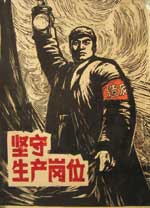
Arriving as a sort of coda to America's own eight-year odyssey of partisan incompetence and the accompanying, similarly interminable, right-wing ideological fashion show, the 2008 summer games in Beijing have provided a particularly concentrated reminder of just how ham-fisted and silly a State's representational output can be. That governments lie all the time is not news, and indeed, one worries that the upshot of the People's Republic's rather flagrant canoodling with hi-tech mendacity will be further distraction from certain local orgies of deceit still awaiting punishment. That said, to paraphrase any number of overmatched announcers, China really has taken the propaganda competition to a new level. First there were the fireworks, made digitally diesel for the benefit of the broadcast. Then the adorable nine year old, lip-syncing because the actual, seven year old singer had crooked teeth, "The audience will understand that it's in the national interest," said the ceremony's music director. In the more recent case of its prepubescent gymnast, the hosts at least had the decency to make something up. And all this against more typical instances of forced labor, tossing elderly protesters in jail, and censorship.
All of which is to say that, what has been so striking about these instances, is the attitude of naked insturmentalization towards the mass media, past even the point of absurdity. No one would have found the opening ceremony any less impressive had clouds been allowed to obscure some of the fireworks, yet Beijing was not willing to take that chance, and further, made apparently little to no effort to conceal its actions. It is easy and wrong to see this as a contrast to the United States, and not simply because of Fox News' continuing to function as the administration's personal blog. It is wrong because the extent of China's integration with our own market forces us to consider their conditions of production as of a piece with our own. If it is the case, as has been said, that the American working class now lives in China, then the ways and means of the Chinese government are bound up with our continued dependence on their industrial output. In this sense, any contrast between our respective state-sponsored representational catalogs reflects not the relative level of tyranny or freedom of a given State, but instead the differing relationships to media and authenticity authorized by distinct segments of the capitalist world system. The Beijing Olympics, then, considered from the standpoint of a history of representation, are perhaps best approached as a sort of counterpoint, several decades on, to the Congress for Cultural Freedom's international prostitution of abstract expressionism as a weapon of the cold war. These games are a group show designed, sure enough, to showcase the best of one country and yet they contain enough instances of manipulation and trickery to reveal something a great deal more disturbing about the status of our international stage.
Looking at Music: Art and Music in Popular Culture
Organized by Barbara London and Hanne Mugaas
6pm Thursday 21 August 2008
MoMA, Titus Theater 2 - 11 West 53 St, New York NY
$10
This Thursday MoMA presents Looking at Music: Art and Music in Popular Culture, a supporting video program exhibited in conjunction with the Looking at Music, an exhibition currently on view through 31 December 2008. The evening's screening brings together a number of music and art videos with a bend on both counts towards synth melodies, pop culture, gender play and videos cut to the beat. Program highlights include Brazillian queercore act Dominatrix's 1984 video for The Dominatrix Sleeps Tonight, The Cars' Hello Again directed by and briefly featuring Andy Warhol, Seth Price's historical visualization of the New Jack Swing musical genre, Aïda Ruilova's short beat-driven looping videos and Cory Arcangel's ham-fisted demonstration of an Apple Garage Band tuning feature on Jimmy Hendrix's Star Spangled Banner.
This past Saturday, 16 August, Maximum Perception: Contemporary Brooklyn Performance hosted its opening ceremonies at the Bushwick-based English Kills Gallery. Artist Peter Dobill and Chris Harding have curated 4 long weekends of live art with local artist staging a variety of often site-specific performance work. Starting off the series was artist Rob Andrews who performed the Minotaur Piece, chaining himself to a light post, prone and in costume. Also performing this weekend were Holly Faurot and Sarah H. Paulson, Ximena Garnica and Shige Moriya, and Marni Kotak. Available on Maximum's website is a schedule of upcoming performances as well as video documentation of the events as they occur.
Editor's note: Re:Public is H.V.'s a new column on ArtCal covering contemporary street art in New York City.
Re:Public, Masters of the Ephemeral
If the world of street art is mercurial then it should come as no surprise that the art of two of downtown's most visible artists are as ephemeral as the urbanscape.
Poster Boy may be new to the game but he has already attracted much attention for his precise mash-ups of advertising and signage. Using a razor, he targets mainstream advertising images which he remixes into funny and absurd commentaries on life, culture and politics. He admits that he has long vandalized posters but more recently his reformatting of corporate propaganda is being honed to cleverly subvert its original message. His Flickr page surfaced only a few months ago and it is definitely provides the easiest access for his hybrid work.
Why does he do it? "I do it for a few reasons," he tells me over email. "A: I can barely afford art materials. B: I don't like the media bombarding me with bullshit everywhere I go. C: I like to see the public react to my work."
Though nothing appears sacred to him, Poster Boy does make a point to target ads that piss him off the most. The only people who seem to take exception to his work tend to be agents of the municipal surveillance industry: the NYPD and MTA workers. He knows that it can be quite jarring for many people to spot a razor-wielding figure on the subway platform but he sees them relax when they realize he's only interested in artistic mayhem.
"I don't want Poster Boy to be about one person. They're never signed, unless you consider the Flickr page my signature, so that any piece can belong to anyone. A lot of people say I'm a sucker for not trying to make money off Poster Boy, but I still feel rewarded. However, I'd like to make a book of the best pieces from '08. Who knows how well that'll turn out?" he says.
Another street artist who has been creating marginal street art works is Aakash Nihalani, who doesn't use a nickname like so many other street talents. He fashions cubes out of colorful tape throughout Brooklyn and Manhattan. He explains why the box appeals to him and why he shies away from variations of his beloved form: "We live in a big city of big boxes with little windows peeking onto other big boxes next to smaller ones, and so on. The shape, the image I employ, is New York. I guess I feel like there's a certain sense of forgotten dimension, a lot of overlooked layers. So I create reminders and portals with the cubes, adding to the urban landscape. It just makes sense."
Dina Ramadan at the New Museum
7pm Thursday 14 August 2008
New Museum - 235 Bowery, New York NY
Tonight at the New Museum, scholar Dina Ramadan presents A Taste for the Modern: Art Criticism and the Making of the Egyptian Bourgeoisie -- a talk on the current state of contemporary art production and criticism in Egypt, and how the relationship between is a component in larger systems of subject formation in Egyptian society. Ramadan takes as her point of departure the popular Egyptian journal Sawt el-Fannan (The Voice of the Artist), and that publication's role since the 1950s in aesthetic knowledge production and taste. From the press release:
Through an expansive understanding of its field, Sawt el-Fannan has produced a complicated and multifaceted relationship between artistic production and art criticism, one in which its role is both reflective and productive. For Ramadan, the notion of “taste” or al-Hassa al-Dhawqiyya is central to the objectives of Sawt el-Fannan as a means of cultivating a bourgeois artistic awareness and aesthetic sensibility (what French cultural sociologist Pierre Bourdieu would call “cultural competence”) as part of the larger project of constructing the modern subject in Egypt.
Suspension: Paintings by Liz Ainslie & Collages by Evan Reehl Ryer
Spazio 522 - 526 West 26th Street, 5th Floor, New York NY
29 May - 15 August 2008
Pictures and words don't always make ideal companions and often make awkward lovers but fortunately for Liz Ainslie and Evan Reehl Ryer they are both visual artists while I am left with the difficult task of writing about these two who seem to mambo (visually anyway) with flair.
Ainslie's work is an odd mixture of Giorgio Morandi's hazy vision and Ad Reinhardt's floating geometry. She has a knack for painting simple compositions which slowly reveal themselves to be complex, moody and sophisticated. Ryer's work is fast, layered and jarring. They look like Henri Matisse collages on crystal meth.
I assume the show's title derives from the feeling of weightlessness in each artist's work; yet that loose airy feeling is clear in Ainslie's art but less certain in Ryer's. There's no self-consciousness in Ainslie's brush. She draws luscious shapes that float in fields of color that are sometimes jarring but more often swim in a sea of brushstrokes and textures. Her latest series -- she calls them "slices" -- are her best yet.
Last Thursday artist Andres Laracuente presented Light on Light, a sculptural work activated by a performance, at Cleopatra’s, a new exhibition venue in Greenpoint, Brooklyn. The work was materially composed of two long and fluorescent tube lights facing up and installed in a standard metal base some inches above the gallery floor. When the gallery filled with invited guests, a blue liquid was poured carefully up and down the length of two bulbs and subsequently set afire, producing a near invisible flame. The harsh cold light from the flourescents was the only illumination in the gallery space, and it remained on briefly, sharply contrasting with the more chemical glow of the exposed flame. Moments later both bulbs extinguished and burst loudly, shattering glass across the gallery and filling the space with a soft, troubling odor.
The work recalls Anthony McCall’s 1970s Landscape for Fire series, in which the artist laid out meticulous grids of flammable materials in empty fields, later performing with his assistants and lighting the grids on fire as night fell. The going of one kind of light and the coming of another for McCall was here the violent snuffing of the fluorescent lights for Laracuente: a transitional state that makes that which is otherwise barely perceptible visually dominate. This moment – the flicker of the lights before their termination, the silence before the explosion of the bulbs – is the center of Laracuente’s piece, embedded by the artist in his otherwise minimal office aesthetic; rather than occupying a large outdoor space like McCall, Laracuente works modestly and usually presents the piece in his studio or a gallery. Instead of the sun whose absence makes possible McCall’s work, in Laracuente’s case it is the play of the white fluorescent lighting that produces the visual impact that is eventually transformed into another kind of phenomenon. Not the least of that impact was surely fortified by the evocations of abundance and scarcity (of light, energy, and order). These two are tokens in an environmentalist rhetoric that is everyday winning new ground in our popular culture, moving, since its somewhat rarefied 18th century origins in this country, to become popular political and lifestyle talking points, as well as coordinates on a rapidly developing entrepreneurial field.
Following the performance, the trace material of Light on Light, two shattered fluorescent bulbs, remained on view through Cleopatra’s storefront display until yesterday, when the work was deinstalled.
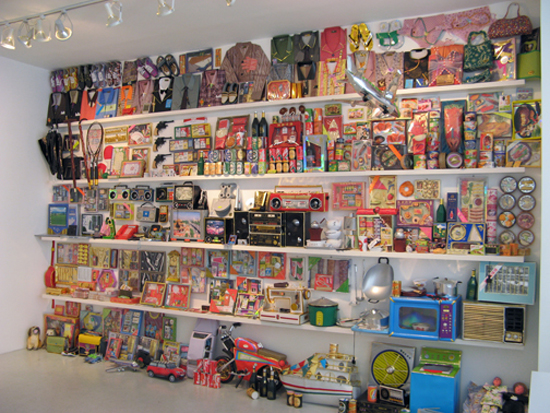
If Love Could Have Saved You, You Would Have Lived Forever
Bellwether Gallery - 134 Tenth Avenue, New York NY
10 July - 8 August 2008
Then there is this civilizing love of death, by which
Even music and painting tell you what else to love.
[…]The people who dig up
Corpses and rape them are I understand not reported.
--William Empson, Ignorance of Death
Ours is a culture that moves quickly. Obsessed with youth, we gaze at the horizon, waiting for the next sun to rise and leave the past to molder away in its tomb. When we do look back, it is with a ghoulish disposition, as if to resurrect the quiet bones of some dead saint and make them dance again. If Love Could Have Saved You, Then You Would Have Lived Forever, at Bellwether Gallery examines this disposition and passes through it to look at the way that the objects of death contribute to our lives. Curated by the gallery’s owner, Becky Smith, the show draws from Ms Smith’s own private collection of memorial artifacts and similarly themed works from contemporary artists.
The impulse to collect the objects of death is one that winds its way throughout the show. As Walter Benjamin wrote, "The most profound enchantment for the collector is the locking of individual items within a magic circle in which they are fixed as the final thrill, the thrill of acquisition, passes over them." And what could be more final than death? Even it may be fetishized and inscribed within the collector's narcissism. There are the Joss paper effigies, paper re-constructions of real items, Victorian hair wreaths, floral tableaux woven from the hair of a dead loved-one, and collected images of blank grave-markers, used to sell gravestones. Rob Hauschild presents a book of photographs depicting roadside memorials, while curator Becky Smith presents her personal collection of photos of unmarked headstones. Like Gogol’s Chichikov from Dead Souls, the collector of death attempts to make their way to life through the remains of the dead.
Rhizome Commissions Conversations
7:30pm Friday 8 August 2008
New Museum - 235 Bowery New York, NY
$8
At the New Museum tonight, Rhizome presents the second in a three part conversation series of artists awarded Rhizome commissions grants for developing new work. The Rhizome commissions program has been in existence sine 2001, and has awarded annual funds for emerging and established artists working with technology in a variety of media and fields. Featured tonight are artist and founder of slowLab Carolyn Strauss, who along with Julian Bleecker have been commissioned to develop slowMail, a project exploring the mediation of time on electronic messaging. Also speaking tonight will be Melanie Crean, who last year was commissioned to develop Phrenology, an online visualization project on the perception of space as related through the writings of incarcerated women. Artists David Nolen, Dan Pfiffer and Mushon Zer-Aviv will also participate on the panel, which will be moderated by Rhizome.org editor Ceci Moss.
The 15th Annual Watermill Benefit
Marlene Dietrich in Dr. No's Ludovico Clinic (Dr. Baby's Erzland)
Jonathan Meese
The Watermill Center - 39 Watermill Towd Road, Watermill, NY
31 July - 10 August 2008
The Watermill benefit is known as the best art party of summer. Each year at the end of July, that king of avant-garde drama Robert Wilson and his acclaimed foundation present their artists-in-residence in the form of an installation heavy, no-expense-spared cocktail extravaganza, littered with equal parts socialite, theater and art world. All in an idyllic setting off the beaten path of the Hamptons. People fly in from all over the world to attend, and there are always a smattering of celebrities and artists. This year Rufus Wainright looked especially sharp in his Viktor & Rolf suit, while Kim Cattrall went with simple and elegant. Fashion-wise, all attending were upstaged by the brilliant costume of Russian artist Andrey Bartenev, this year sporting a minimal black and white op art jumpsuit with giant inflatable spheres along his body contour. As one collector was overheard saying, "I know it's a good party if Andrey is attending."
This year, the main event of the benefit was courtesy of Jonathan Meese. Fresh from his solo exhibition at Bortolami Gallery in New York, Germany-based Meese took over the main building of the center, and turned the various rooms and performance area into an orgy of collage, video performances and Germanic graffiti about the role of art, or rather of Meese's all-inclusive pantheon of art and history in which personality is king, and fictional figures meld with the factual in a complicated belief system that's hard to crack. The bottom line, if one is to believe artist statements, is that "Art is not a religion, but every Religion is Art."
As summer's grip on the city begins to loosen and activity in the arts districts all but ceases, Flux Factory presents the last installment of their summer artist's tours series Going Places (Doing Stuff). Flux Factory's final listed tour will be lead by Nonsense NYC's Jeff Stark and will take participants to various undisclosed locations. Another tour is likely scheduled for August, although remains missing from Flux Factory's website. Please RSVP for either by emailing [email protected] or calling 718-707-3362 -- and do so soon as tour capacity is usually reached well before the tour date arrives.
Dangerous Women
DFN Gallery - 210 Eleventh Avenue , Sixth Floor, New York NY
24 July - 29 August
Don't trust that woman
Don't trust that woman, boys
'Cause she'll burn you
Turn you into little toys
-Elton John
Ah, July: midway through the 2008 -- post Mileygate, post Hillary, post “Kristen,” (who prompted the “Spitzer? I hardly knew her!” ) Breathing a breath of fresh air into a topic desperately in need of some CPR, the intriguingly titled group show, Dangerous Women at DFN Gallery comes to our rescue. The exhibition is a raucous, brilliant display of what is and is not considered safe with society's ever changing definition of femininity. The artists involved also challenge preconceived notions of the pursuit of the feminist Holy Grail: that of the self-defined woman.
In her painting New Day, Alison Blickle seems to channel every girl's inner Patricia Field, having her erstwhile explorer triumph over the buried Grecian goddess beneath her, balancing her velvet embossed platform heels -- with bows to boot -- on a frozen body of water. But is this a female Sir Edmond Hillary, raising her flag in conquest, reaching the pinnacle of success or the white flag one of surrender? For the image Blickle is evoking is that of a sexed up fashion plate, eager to showcase her wares for her next victim. Is she a complacent player in the “What Not to Wear” generation of feminism, or is there more beneath the surface? I loved this piece for its challenge of initial perception. My own jury's out on if she's a harbinger of victimization or heroism. The come-hither expression, with bottom lip agape, looks more akin to Mischa Barton than to any championing of feminist thinking. It's an interesting juxtaposition -- the comely beauty, triumphant on solid frozen footing -- for the frozen river the subject stands upon seems as storied as the millennial glaciers. But last this reviewer checked, the glaciers are melting.
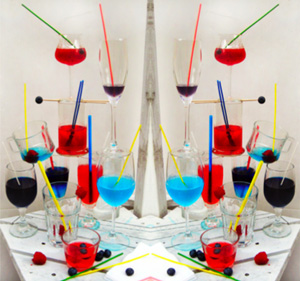
Exit Poll Cocktail Toll - Six Feet Under
Dean Baldwin
6 - 10pm Thursday 7 August 2008
White Box - 525 W. 26 St New York, NY
This Thursday at White Box, the fifth installment of Six Feet Under - the gallery's seven part summer exhibition series - commences with Exit Poll Cocktail Toll, Canadian artist Dean Baldwin's "free and participatory art, cocktail, and polling event." Curated by Chen Tamir, Baldwin's event this Thursday will transform White Box's Chelsea space into full functional bar from 6-10pm and invite visitors to imbibe free red, white and blue cocktails. Participants will then be free to respond to various polls materially represented in the gallery by stacking their empty or near-empty glasses at designated spots to cast their votes, turning the otherwise necessarily clinical processes of democratic participation into both an irreverent and celebratory affair.
CREEK to CANAL: Corrosion Catalyst
NURTUREart - 910 Grand St Brooklyn, NY
12pm Saturday and Sunday 2-3 August 2008
This weekend and each following through 18 August, artist scrapworm will be providing Creek to Canal, a 30 minute walking tour of the English Kills Canals in Bushwick. The tour take place Saturdays and Sundays at noontime as part of the exhibition Demo Eco M.O.
(Demonstrations of Ecological Modes of Operation), curated Linda Weintraub at NURTUREart. Tours start at NURTUREart's space on Grand Street in East Williamsburg. From the press release:
Exploring the constructed water systems of storm drains, pipes, and the walled in creek that became the English Kills Canals in the late 1800's, the dialogue of the tour will inquire into the impact of such rigidities and impermeabilities in the metropolitan ecosystem. Discussing the vicious cycle of combined sewer overflow surges (and their pollutant contents) flowing back into the stagnancy found at the end of the English Kills, the tour experience will unfold in the landscape. It will also occur in the presence of subtle collaborators, and, primarily, in the presence of the open mind to participate that you, the most important component, bring to the 30 minute interactive walk.
ZINE
HOME
TIPS / COMMENTS
CATEGORIES
CONTRIBUTORS
- Greg Afinogenov
- B. Blagojevic
- Adda Birnir
- Susannah Edelbaum
- Julie Fishkin
- Paddy Johnson
- Jessica Loudis
- Christopher Reiger
- Andrew Robinson
- Peter J. Russo
- Blythe Sheldon
- S.C.Squibb
- Hrag Vartanian

